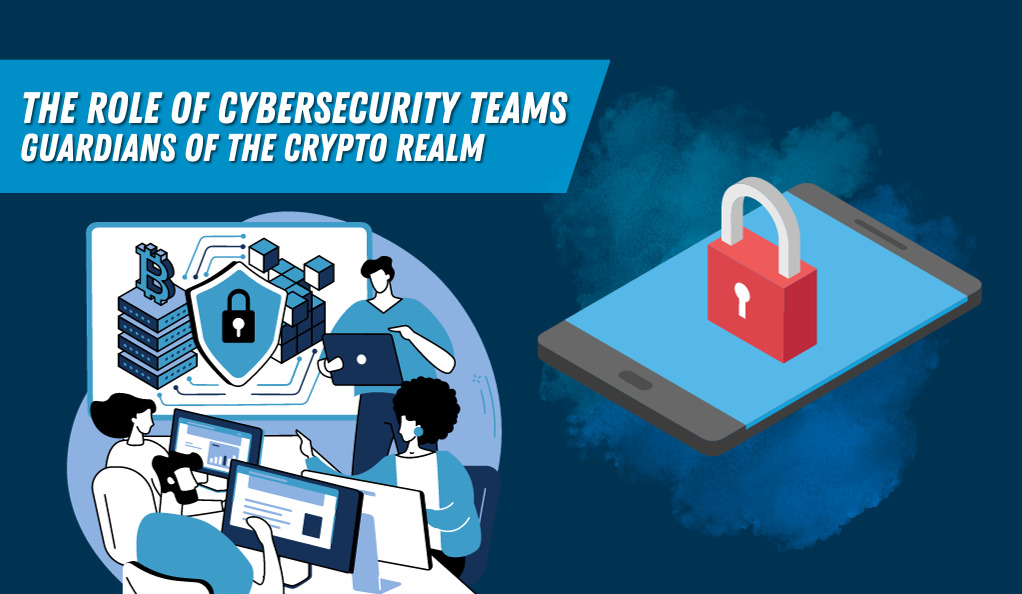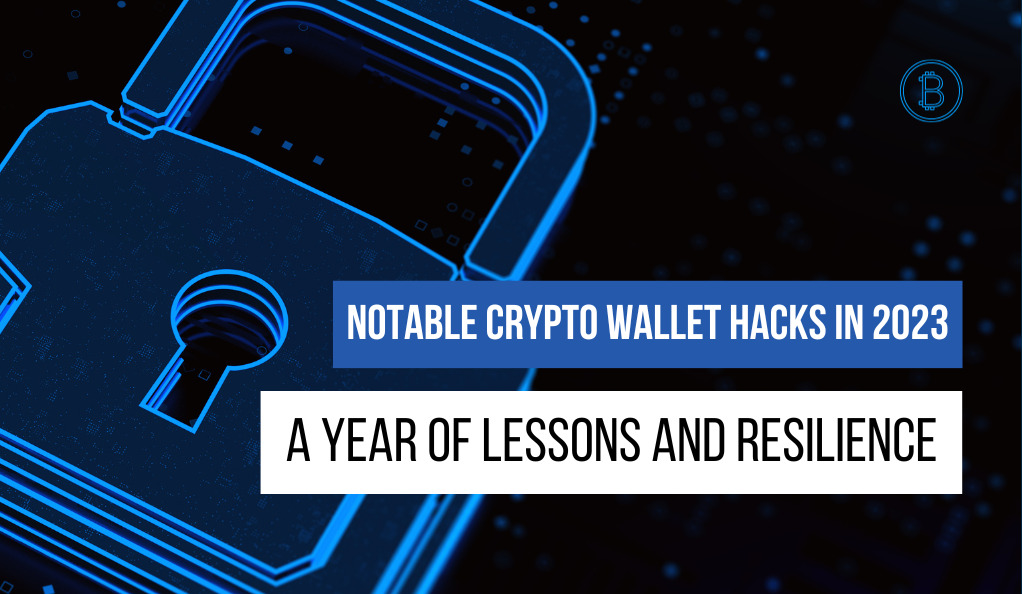The digital age has ushered in a plethora of innovations, with cryptocurrencies being one of the most groundbreaking. As digital assets grow in popularity and adoption, so does the allure for cybercriminals to exploit vulnerabilities in the systems that store and manage these assets: crypto wallets. This section delves into the rise of crypto wallet hacks, emphasizing the importance of understanding and addressing vulnerabilities to ensure the safety of digital investments.
The Rise of Crypto Wallet Hacks
Over the past few years, the cryptocurrency market has witnessed exponential growth, both in terms of market capitalization and user adoption. With this surge, there has been a parallel increase in the number of crypto wallet hacks. These hacks are not just limited to individual users but have also targeted major exchanges, causing significant financial losses and shaking the trust of investors in the crypto ecosystem.
| Year | Number of Hacks | Estimated Loss (in USD) |
|---|---|---|
| 2019 | 12 | $292 Million |
| 2020 | 15 | $356 Million |
| 2021 | 18 | $415 Million |
| 2022 | 22 | $487 Million |
| 2023 | 25 (till August) | $512 Million |
Understanding the Importance of Vulnerabilities
While the numbers in Table 1 are alarming, they underscore a crucial aspect: the importance of understanding vulnerabilities. Each hack, each breach, is a lesson in the imperfections of the systems we trust. By analyzing these vulnerabilities, the crypto community can develop more robust security measures, ensuring that digital assets are safeguarded against future threats.
Moreover, for individual investors, understanding these vulnerabilities is not just about safeguarding assets but also about making informed decisions. An informed investor is less likely to fall prey to scams, phishing attempts, or other malicious activities that target their digital assets.
The Libbitcoin Explorer Vulnerability: A Deep Dive

As the crypto community continues to grow, so does the complexity and variety of tools and platforms available to users. One such tool, the Libbitcoin Explorer, recently came under scrutiny due to a significant vulnerability that exposed users to potential theft. This section provides an in-depth analysis of the Libbitcoin Explorer vulnerability, its implications, and the lessons learned.
Overview of the Libbitcoin Explorer 3.x Library
Libbitcoin Explorer, often abbreviated as “Libbitcoin,” is a popular Bitcoin wallet implementation. It’s not just limited to Bitcoin; developers and validators use Libbitcoin to create accounts for various cryptocurrencies, including Ethereum, Ripple, Dogecoin, Solana, Litecoin, Bitcoin Cash, and Zcash. Its versatility and adaptability have made it a preferred choice for many in the crypto community.
However, with adaptability comes responsibility. A tool as powerful as Libbitcoin needs to be foolproof, ensuring that users’ assets are safe. Unfortunately, a recent vulnerability dubbed the “Milk Sad” vulnerability exposed a chink in its armor.
The “Milk Sad” Vulnerability and Its Discovery
The “Milk Sad” vulnerability was not an inherent flaw in the Libbitcoin system but rather a loophole in its key generation mechanism. This loophole allowed attackers to guess private keys with alarming ease, leading to unauthorized access and potential theft.
The vulnerability was first discovered by the cybersecurity team “Distrust.” Their findings revealed that the Libbitcoin Explorer had a faulty key generation mechanism. Specifically, when users employed the “bx seed” command to generate a wallet seed, it sometimes produced the same seed for multiple users. This lack of randomness in seed generation was a direct result of the command using the Mersenne Twister pseudorandom number generator (PRNG) initialized with 32 bits of system time.
The Real-world Impact: Over $900,000 Stolen
The theoretical implications of a vulnerability are one thing, but the real-world impact paints a clearer picture. In the case of the “Milk Sad” vulnerability, attackers exploited this loophole to steal over $900,000 worth of crypto. One particular attack siphoned away over 9.7441 BTC, equivalent to approximately $278,318 at the time.
The rapid response from the crypto community was commendable. Blockchain security firm SlowMist was quick to identify and report the vulnerability, emphasizing the scale and severity of the attacks. They, along with other entities, worked diligently to mitigate the damage, including blocking suspicious addresses and alerting exchanges to prevent the attacker from cashing out the stolen funds.
How Attackers Exploited the Vulnerability: A Technical Breakdown
The world of cryptocurrencies is intricate, with multiple layers of technology working in tandem to ensure smooth transactions and secure storage. However, as the Libbitcoin Explorer vulnerability highlighted, even a minor loophole can have significant consequences. This section delves into the technical aspects of how attackers exploited the “Milk Sad” vulnerability and the subsequent ramifications.
Faulty Key Generation Mechanism in Libbitcoin Explorer
At the heart of the “Milk Sad” vulnerability was a flawed key generation mechanism. Cryptocurrencies rely heavily on cryptographic keys, with private keys being the most crucial. They are akin to a password, granting access to one’s digital assets. Therefore, the generation of these keys needs to be random and unique.
However, the Libbitcoin Explorer’s “bx seed” command, designed to generate wallet seeds, was found to be using the Mersenne Twister pseudorandom number generator (PRNG) initialized with 32 bits of system time. This method lacks the randomness required for secure key generation. As a result, it sometimes produced identical seeds for different users, making their wallets vulnerable to unauthorized access.
Guessing Private Keys: Easier Than Expected
With the faulty key generation mechanism in place, attackers found it relatively easy to guess private keys. By exploiting the lack of randomness in the “bx seed” command, they could generate the same seeds that legitimate users were generating. Once they had access to these seeds, deriving the associated private keys was straightforward.
This ease of access was alarming. In traditional banking systems, guessing a user’s password or PIN would require multiple attempts, often triggering security protocols. However, in the case of the Libbitcoin vulnerability, attackers could bypass these safeguards due to the predictability of the seed generation process.
The Scale of the Exploitation
The consequences of this vulnerability were far-reaching. As mentioned earlier, attackers managed to steal over $900,000 worth of crypto in a short span. But beyond the financial loss, the breach eroded trust in the crypto ecosystem. Users began questioning the security of their digital assets, leading to a wave of panic and uncertainty.
Several crypto enthusiasts and experts took to online forums, blogs, and social media to discuss the vulnerability, share their experiences, and seek solutions. The crypto community rallied together, with many offering advice on how to secure assets, change private keys, and switch to more secure wallet implementations.
The Role of Cybersecurity Teams: Guardians of the Crypto Realm

In the vast and ever-evolving landscape of cryptocurrencies, cybersecurity teams play a pivotal role. Their expertise and vigilance are the first lines of defense against potential threats. The discovery and subsequent management of the “Milk Sad” vulnerability by the cybersecurity team “Distrust” is a testament to the importance of these guardians. This section delves into their role, their discovery of the loophole, and the collaborative efforts that ensued to address the vulnerability.
Introduction to the Cybersecurity Team “Distrust”
“Distrust” is a renowned cybersecurity team known for its expertise in blockchain and cryptocurrency security. Their primary objective is to identify vulnerabilities, propose solutions, and work collaboratively with developers and the broader crypto community to enhance security protocols. Their reputation for thoroughness and efficiency has made them one of the go-to teams when it comes to crypto security.
Discovery of the Loophole
The “Milk Sad” vulnerability came to light when “Distrust” identified the flawed key generation mechanism in the Libbitcoin Explorer. Their meticulous analysis revealed that the “bx seed” command, which was supposed to offer a secure method for generating wallet seeds, was, in fact, producing predictable seeds due to its reliance on the Mersenne Twister pseudorandom number generator (PRNG).
Upon this discovery, “Distrust” took immediate action. They documented their findings, detailing the technical aspects of the vulnerability, and reached out to the developers of Libbitcoin Explorer and the broader crypto community.
Collaborative Efforts to Address the Vulnerability
The response to “Distrust’s” discovery was swift and collaborative. Blockchain security firm SlowMist, along with other entities in the crypto space, joined forces to mitigate the impact of the vulnerability.
- Immediate Alerts:
- Warnings issued to Libbitcoin Explorer users.
- Recommendations for immediate password changes and refraining from using the “bx seed” command.
- Blocking Suspicious Activities:
- Active monitoring of the blockchain for suspicious activities related to the vulnerability.
- Blocking of suspicious addresses and alerting exchanges to prevent unauthorized transactions.
- Developing a Fix:
- Collaboration between developers and experts to create a patch.
- Implementation of a more random and secure seed generation process.
- Community Engagement:
- Use of webinars, online forums, and social media for discussion and education.
- Active participation of experts to offer advice and ensure users are well-informed.
Understanding the Technical Loophole: The Science Behind the Flaw
In the intricate world of cryptography and digital security, even the smallest oversight can lead to significant vulnerabilities. The “Milk Sad” loophole in the Libbitcoin Explorer is a prime example of how a seemingly minor technical detail can have vast implications. This section delves deeper into the technicalities of the loophole, offering a comprehensive understanding of its origins and effects.
The “bx seed” Command: A Closer Look
At the core of the “Milk Sad” vulnerability is the “bx seed” command. Designed to generate wallet seeds for users, this command is integral to the security of the assets stored in the wallet. A seed, in cryptographic terms, is a piece of data used as the starting point for generating a sequence of random numbers. These numbers, in turn, play a crucial role in creating cryptographic keys.
However, the “bx seed” command in the Libbitcoin Explorer was found to be using the Mersenne Twister pseudorandom number generator (PRNG) initialized with 32 bits of system time. This approach, while seemingly random, has a significant flaw.
Mersenne Twister PRNG: The Underlying Issue
The Mersenne Twister is a widely-used PRNG known for its long period and high-quality random outputs. However, when initialized with only 32 bits of system time, its randomness becomes predictable. System time, being a continuously increasing value, offers limited variability, especially when used in a system with numerous users generating seeds simultaneously.
This lack of true randomness meant that the “bx seed” command could, and did, produce identical seeds for different users at times. With identical seeds, the derived private keys would also be identical, making wallets vulnerable to unauthorized access.
Real-world Implications of Predictable Randomness
In the cryptographic domain, predictability is a grave concern, and the implications of the “Milk Sad” vulnerability in the Libbitcoin Explorer brought this to the forefront. The predictability of the “bx seed” command meant that attackers could easily generate identical seeds, leading to identical private keys and making wallets susceptible to unauthorized access.
This vulnerability had tangible consequences for Libbitcoin Explorer users. Unauthorized access led to potential asset transfers, resulting in significant financial losses. Beyond the monetary implications, the breach also eroded trust in the broader crypto ecosystem, prompting users to question the security of their digital assets and the platforms they rely on.
Reactions from the Crypto Community: Navigating the Storm
The revelation of the “Milk Sad” vulnerability in the Libbitcoin Explorer sent ripples throughout the crypto community. Such incidents, while technically intricate, have profound implications that extend beyond the realm of code and algorithms. This section explores the reactions from various stakeholders in the crypto ecosystem, their efforts to address the situation, and the broader lessons learned.
Immediate Responses and Damage Control
The immediate aftermath of the vulnerability’s discovery was marked by a flurry of activity. Key players in the crypto space, from individual users to major exchanges, scrambled to understand the implications and take protective measures.
- User Panic:
- Alarmed reactions from users, especially those who had used the “bx seed” command.
- Surge in discussions, queries, and concerns on online forums and social media platforms.
- Exchange Alerts:
- Major exchanges issued alerts regarding the vulnerability.
- Temporary halting of transactions from potentially compromised wallets.
- Developer Pledges:
- Acknowledgment of the vulnerability by the Libbitcoin Explorer developers.
- Urgent advisories to users and assurances of a forthcoming fix.
Voices from the Frontlines: Libbitcoin Institute’s Take
Eric Voskuil, a member of the Libbitcoin Institute, provided insights into the issue. He emphasized that the “bx seed” command was intended as a convenience tool, primarily for demonstrating certain behaviors, rather than for production use in securing real assets. Voskuil acknowledged the insufficiency of warnings regarding the command’s use and promised corrective measures, including strengthening warnings or potentially removing the command altogether.
Community Collaboration: Strength in Unity
One of the silver linings of such incidents is the demonstration of the crypto community’s resilience and collaborative spirit. The “Milk Sad” vulnerability became a rallying point, bringing together experts, developers, and users.
- Shared Resources: Several experts and cybersecurity teams, including “Distrust,” shared resources, guides, and tools to help users navigate the situation. This collaborative approach ensured that even less tech-savvy users had access to the information and tools they needed.
- Webinars and Workshops: Recognizing the need for education, several organizations hosted webinars and workshops. These sessions delved into the technical aspects of the vulnerability, offered solutions, and educated users on best practices in crypto security.
- Feedback Loops: Developers and platform operators opened channels for feedback, allowing users to report any suspicious activities, share their experiences, and suggest improvements. This two-way communication was crucial in restoring trust and ensuring that all potential issues were addressed.
Other Notable Crypto Wallet Hacks in 2023: A Year of Lessons and Resilience

The “Milk Sad” vulnerability in the Libbitcoin Explorer was not an isolated incident in the crypto world. The year 2023 has seen its fair share of challenges, with several notable crypto wallet hacks making headlines. This section delves into some of these incidents, exploring their impact, the community’s response, and the broader implications for the crypto ecosystem.
The Atomic Wallet Breach: A Major Setback
One of the most significant hacks of 2023 was the breach of the Atomic Wallet, which led to a staggering loss of over $100 million. The hack was acknowledged by the app’s team in June, sending shockwaves throughout the crypto community.
- Nature of the Breach:
- Attackers exploited a vulnerability in Atomic Wallet’s download server.
- Unauthorized access to user data and private keys was gained.
- Community Response:
- The Atomic Wallet team swiftly responded with alerts to users.
- Recommendations were made for immediate password changes.
- A thorough investigation into the breach was initiated.
- Lessons Learned:
- The breach underscored the importance of securing not just the wallet software but also associated infrastructure.
- It highlighted the need for enhanced security in download servers and update mechanisms.
Cybersecurity Certification Platform CER’s Findings
In July 2023, the cybersecurity certification platform CER unveiled its wallet security rankings, shedding light on some concerning trends in the crypto world. Out of 45 wallet brands analyzed, a mere six had employed penetration testing to uncover vulnerabilities, highlighting a significant gap in proactive security measures across the industry.
The report further emphasized the disparity in security protocols among different wallets. Some lacked even basic encryption measures or multi-factor authentication, underscoring the need for standardized security practices. CER’s findings served as a clarion call, urging wallet providers to prioritize security, invest in regular audits, and adopt industry best practices to safeguard user assets.
The Lazarus Group’s Advanced Tactics
Another notable incident involved the North Korean hacking group Lazarus. Believed to be behind several high-profile crypto thefts, the group showcased advanced tactics in 2023, using cross-chain bridges and liquidity protocols to mix and move stolen assets, making tracking and recovery exceptionally challenging.
- Sophistication in Attacks:
- The Lazarus Group showcased advanced methods in their crypto theft endeavors.
- They exploited advanced crypto protocols, highlighting the evolving nature of threats.
- Use of Cross-Chain Bridges and Liquidity Protocols:
- The group utilized cross-chain bridges to move stolen assets between different blockchains.
- Leveraged liquidity protocols to mix stolen assets, making tracking and recovery challenging.
- Collaborative Defense:
- In response to the Lazarus Group’s tactics, crypto entities collaborated on defense strategies.
- Shared intelligence and developed tools were used to track and counteract the group’s movements.
Conclusion: The Evolving Landscape of Crypto Wallet Security
The events of 2023 highlighted the vulnerabilities in the fast-evolving world of cryptocurrencies. For users, vigilance is crucial, with practices like regular updates and multi-factor authentication being essential. As the crypto landscape advances, innovations like decentralized identity verification and AI-driven threat detection will shape wallet security. The community’s resilience and collaboration will be pivotal in ensuring a secure crypto future.
At axerunners.com, our goal is to furnish well-rounded and trustworthy information regarding cryptocurrency, finance, trading, and stocks. Nonetheless, we avoid providing financial advice and instead encourage users to conduct their own research and meticulous verification.
Read More










